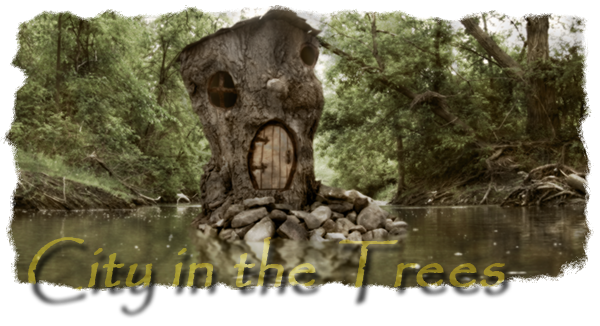Last weekend I was at the library to photograph photographs by Ted Chirnside, an amateur who recorded much about the rural fringe of Metro in transition in the 1950s and 1960s, and then donated much of that to the city. A couple of the shots I was able to capture for myself purport to show the old narrow bridge that once carried Finch Avenue East over the East Don River just a little west of Leslie Street. I was delighted to find them because I know the place well.
(Incidentally, the above shots, today, look something like this.)
But when I was looking at them, a couple of things bothered me. First, the hill leading up from the bridge towards Leslie seemed away too abrupt. There's nothing like that there now. Even taking into account that the newer bridge is probably set higher from the river, it didn't jibe with me. But when I checked the single aerial photo I have of the area from the late 1950s, sure enough, there's steep incline suggested on the east end of the bridge, and a fence line that's visible on the crest in the shots. I'm at a loss to explain the difference in topography today, but there's no denying them's the facts. Things change. A few of the trees still give me pause, but I'm more convinced now than I was.
But the other contra-indicator, and this was a big one for me, was the shadow angles. They fall across Finch Avenue from the north side, which I considered impossible. The sun, I told myself, is always in the southern sky if you're north of the Tropic of Cancer, so the shadows can't fall southerly. Yet that's what I was seeing. Long sunset (or, I suppose, sunrise) shadows across Finch Avenue from the north. Impossible! The photographer, I mused, must have gotten confused over the years as to the location of which particular little tree-lined bridge (and there were dozens of them around northern Toronto and beyond) he was looking at.
But the more I thought about it, the more I started second-guessing myself. I remembered sunsets in the summer, and the angle of them over scenes I knew well, and it struck me that those angles might have been possible by very late in the day. But how could I check? I thought, there must be some resource on the net that will tell you the angle of sunset on a given day at a given latitude. So I went looking.
I found a fantastic new application called The Photographer's Ephemeris. It's freeware, and it runs on Adobe AIR (which is also freeware). It overlays rays showing sunrise, sunset, moonrise, and moonset on a GoogleMaps map set to the location you choose, and is phenomenal for planning dramatic shots. If you know where you want to be standing and where you want to be looking, this thing can tell you down to the minute when you're going to see that. Apparently, with a little bit of work, it can even take the elevation of the horizon into account. This thing is wholly amazing! And it looks cool, too. :)
If you want to see the sun setting over SkyDome (sorry, "The Rogers Centre") from the shore of Algonquin Island, set your camera up just before 9 p.m. on June 17th. :)
Oh, and as for my "impossible" summertime shadows at the Finch Avenue bridge? Oh, yeah. They were possible, alright. Which means I'm cool to go ahead and shoot the "now" scene there with confidence. East Don River, here I come. :)
(Incidentally, the above shots, today, look something like this.)
But when I was looking at them, a couple of things bothered me. First, the hill leading up from the bridge towards Leslie seemed away too abrupt. There's nothing like that there now. Even taking into account that the newer bridge is probably set higher from the river, it didn't jibe with me. But when I checked the single aerial photo I have of the area from the late 1950s, sure enough, there's steep incline suggested on the east end of the bridge, and a fence line that's visible on the crest in the shots. I'm at a loss to explain the difference in topography today, but there's no denying them's the facts. Things change. A few of the trees still give me pause, but I'm more convinced now than I was.
But the other contra-indicator, and this was a big one for me, was the shadow angles. They fall across Finch Avenue from the north side, which I considered impossible. The sun, I told myself, is always in the southern sky if you're north of the Tropic of Cancer, so the shadows can't fall southerly. Yet that's what I was seeing. Long sunset (or, I suppose, sunrise) shadows across Finch Avenue from the north. Impossible! The photographer, I mused, must have gotten confused over the years as to the location of which particular little tree-lined bridge (and there were dozens of them around northern Toronto and beyond) he was looking at.
But the more I thought about it, the more I started second-guessing myself. I remembered sunsets in the summer, and the angle of them over scenes I knew well, and it struck me that those angles might have been possible by very late in the day. But how could I check? I thought, there must be some resource on the net that will tell you the angle of sunset on a given day at a given latitude. So I went looking.
I found a fantastic new application called The Photographer's Ephemeris. It's freeware, and it runs on Adobe AIR (which is also freeware). It overlays rays showing sunrise, sunset, moonrise, and moonset on a GoogleMaps map set to the location you choose, and is phenomenal for planning dramatic shots. If you know where you want to be standing and where you want to be looking, this thing can tell you down to the minute when you're going to see that. Apparently, with a little bit of work, it can even take the elevation of the horizon into account. This thing is wholly amazing! And it looks cool, too. :)
If you want to see the sun setting over SkyDome (sorry, "The Rogers Centre") from the shore of Algonquin Island, set your camera up just before 9 p.m. on June 17th. :)
Oh, and as for my "impossible" summertime shadows at the Finch Avenue bridge? Oh, yeah. They were possible, alright. Which means I'm cool to go ahead and shoot the "now" scene there with confidence. East Don River, here I come. :)





